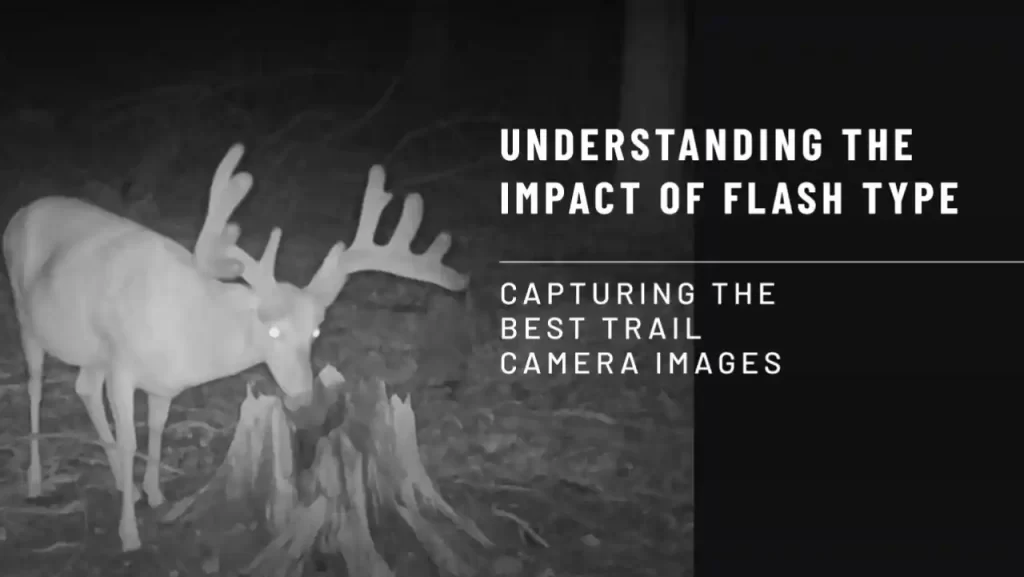
The flash type of a trail camera significantly influences the quality of images captured, especially under low-light or nighttime conditions. Here’s how each type of flash can affect image quality:
White Flash:
- Image Quality: Produces the highest quality images at night because it captures full-color photographs, similar to those taken in daylight.
- Details: Allows for more detail and resolution because the white light provides the full spectrum of colors, leading to crisp images with true-to-life coloration.
- Consideration: May cause ‘white-out’ if the subject is too close to the camera, leading to overexposed images where detail is lost.
Low-Glow Infrared (IR) Flash:
- Image Quality: Images are in black and white because the camera uses IR light, which is outside of the visible spectrum for color. While offering good clarity and contrast, these images typically don’t have the same detail as those from a white flash.
- Details: Although the images are monochromatic, the low-glow IR flash can capture decent detail without startling wildlife as much as white flash.
- Consideration: The subtle red glow may be noticed by wildlife and humans, occasionally affecting the subject’s behavior and camera stealth.
No-Glow Infrared (IR) Flash:
- Image Quality: Similar to low-glow IR, but the no-glow IR flash may have reduced image quality when compared to low-glow because it uses a wavelength of IR light that is even less visible and thus may be less powerful.
- Details: Good for capturing movement and behavior patterns of animals at night with minimal disturbance, but images may be grainier or less clear, particularly at greater distances.
- Consideration: Utmost discretion is maintained with no visible light emitted, making these cameras suitable for security purposes and sensitive wildlife monitoring.
Technical Aspects Affecting Image Quality:
- Exposure Time: A camera’s exposure setting can impact the sharpness of images, especially with moving subjects. Infrared flash typically requires shorter exposure to prevent motion blur.
- Sensor Sensitivity (ISO): Higher ISO settings can compensate for lower light conditions, but may introduce noise (graininess) to the IR images.
- Flash Range: The effective range of the flash impacts how well the subject is illuminated. White flash generally has a broader and more powerful range compared to IR flashes.
Each flash type presents a different balance between image quality and functionality. Choosing the right one will depend on whether your priority is the highest quality color representation, discretion in capturing images, or the need for secure surveillance while minimizing disturbance to wildlife.
